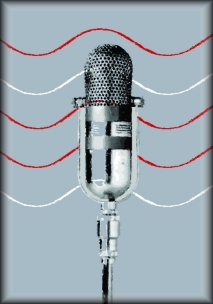|

Graphic: Claudia Rodríguez
The One to Watch
Radio, New ICTs
and Interactivity
ISBN: 92-5-104950-5
Digital Edition 1.1


Edited
by Bruce Girard
In
collaboration with
The
Communication for Development Group
Research, Extension and Training Division
Sustainable Development Department
FOOD AND AGRICULTURE ORGANIZATION OF THE UNITED NATIONS
Rome,
2003

Visit the FAO
RURAL RADIO site

The financial support of the Friedrich Ebert Foundation (FES) Geneva
office is gratefully acknowledged
|
 |

The
One to Watch
Radio New
ICTs and Interactivity
En
español - Secreto a Voces: Radio, NTICs e interactividad

Why the one to watch?
Sometimes looked down upon as the
"poor relation" of television, and certainly considered
old-fashioned compared to the Internet, radio today has become the one
to watch... Still the most portable communication medium, the most
widespread and the most economical, radio is now proving itself
versatile enough to go hand-in-hand with the Web.
Carleen Gardner, Assistant Director-General for Information, FAO

The Internet and other new ICTs are changing radio in the
developing world. But far from making it less relevant, they are opening up hitherto unimagined possibilities:
-
Broadcasters who used to have to
travel for hours or even days to find a public library to research a
programme, now have instant access to the Internet;
-
National, regional and global radio
news agencies are making world news and alternative perspectives
available to even the most remote communities;
-
The radio/telecommunications
combination is helping to keep communities together, despite the
distances imposed by migration.
The cases presented in this book are
among the first examples of the convergence of radio and new ICTs for
development, and the book underscores the significant potential of the
combination. In this convergence, radio promises to take on even greater
significance and value. For this reason, we believe that radio is the
one to watch.

Review comments from Spore,
No. 109, published by Technical Centre
for Agricultural and Rural Cooperation, Feb. 2004.
The next generation of rural radio is already with us. Once prized for their ‘proximity’ to local news as well as local listeners, progressive rural stations have added on several news layers of quality, thanks to the Internet. Research by local stations can now easily have a global spread, and programmes can be shared all over the world, as happens between diaspora migrant communities and their home villages.
Current practices in programme exchange and delivery, and future prospects, are discussed by 22 leading practitioners in rural radio from English-, French- and Portuguese speaking Africa and from Latin America. Their honest consideration of the problems of connectivity on the ‘unpaved information highway’ is what keeps the book’s feet on the ground, and rural radio’s message in the air. But it sows seeds of dreams too: how about – just to stimulate more ideas, send them to Mailbox – organising shared programmes on radio stations in cotton-producing Mali and in subsidised cotton-farming Mississippee in the United States of America? Think global, broadcast local.

[ Home ] [ Table of Contents & Download ] [ Copyright & other info ] [
Español ]

|


